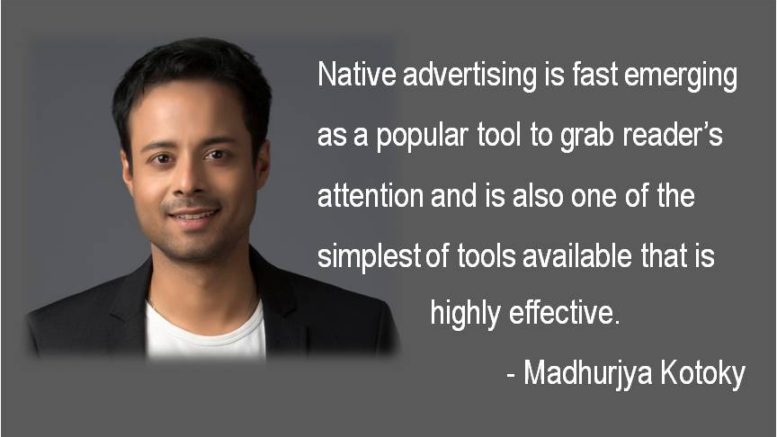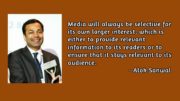Media proliferation and media fragmentation are two dominant trends across the world. A consequence of this is more choice for consumers, resulting in a change in media consumption behavior.
Fragmented Media Consumption
The ‘audience’ as we traditionally spoke about seems now to exist simultaneously across multiple platforms, not necessarily exhibiting the same consumption behavior. A reader might consume information related to sports from Hindustan Times but would prefer to learn about gadgets from a portal such as First Post and might consume movie reviews on his or her Facebook feed. This fragmentation of media consumption is making it all the more harder for brands to reach consumers. This has eroded the value of ‘earned’ media as earned media visibility may not necessarily guarantee influence. On the other hand, a carefully crafted strategy to reach consumers in the fragmented media landscape might pay huge dividends.
Opportunity of a paid strategy
Consequently, we see paid media becoming a core part of the communications strategy worldwide. This is beginning to pick up in Asia Pacific and India as well and we would see an explosion of this trend in the coming years as it also promises a revenue stream for media houses that are grappling with the disruption in their business and operation models.
Trends in paid media
Native advertising is fast emerging as a popular tool to grab reader’s attention and is also one of the simplest of tools available that is highly effective. Native ads tend to fit themselves into the surrounding content mix and serves as a ‘teaser’ for a reader to engage with targeted content. Native ads offer the flexibility to link to sponsored content, earned or owned media and can also accompany a ‘call to action’ with the potential to serve specific marketing goals. According to data released by Adyoulike, Europe’s leading native advertising platform and network, the value of native advertising worldwide is expected to reach almost $59.35bn in 2018!
Native ad platforms include content discovery sites such as Outbrain and Taboola or Social Platforms such as Facebook Boosted Posts or Promoted Tweets on Twitter. Coupled with strong analytics Native Ads serve as a measurable engagement strategy that can provide real time information to a campaign strategist on how are readers discovering, engaging and acting on content. It also provides the opportunity to promote earned media content and kind of create a strategy to ‘reuse’ content multiple times. A key feature of Native Ads is that it enables geo-targeted discovery of content making it a valuable tool for a marketer.
Sponsored content
Very similar to Native Advertising, sponsored content essentially includes brand sponsored content pieces that are designed to appear on sites and social platforms of publishers. This essentially represents a collaboration between a brand and a publisher to curate content for one of the platforms owned and operated by the publisher. Sponsored content needs to have relevance for the publisher in terms of the latter’s overall content strategy for the platform while simultaneously providing real value to a reader with a specific consumption behavior attached to the media platform. Sponsored content normally tend to focus on a larger theme, bringing in only subtle reference to the brand. The influence on a reader is planned to be subliminal. It offers an excellent revenue stream for publishers who now have in-house teams that sell sponsored content offerings to host sponsored content. Buzzfeed popularised this model and is now a common trend worldwide. Brands receive significant boost in credibility as their content is seen or engaged with in important sites.
The promise of virality and multiple use of created content makes sponsored content a PR person’s dream tool as recall of a message can be sustained over a period of time. This not only acts as a force multiplier to the efforts of PR pros in securing earned visibility but also opens up the possibility to integrate all media channels into one coherent content strategy.
The Ethical Dilemma
As pay-for-play gains importance, it’s important for the professional world to consider the ethical dimensions of paid content and publisher-brand partnership in influencing consumer behavior. In India, the communications fraternity should adhere to strict self-regulation and guidelines which are committed to ensuring that misleading or deceptive content does not get presented as editorial content. In the ‘post-truth’ era, where we are talking about “truth, lies, and statements that may not be true but we consider too benign to call false (Ralph Keyes)” the business has to demonstrate responsibility and leadership to ensure that the interest of the audience is not compromised. This calls for high standards of probity from brands, PR consultancies and publishers alike.
It all comes together
At the end of the day, paid media provides another avenue for a PR professional to practice his craft. These are exciting times as it promises every professional the chance to grow with the profession. As we try to be everywhere where our audiences are, we also have the once in a lifetime opportunity to shape how the profession evolves in the years to come.
*All views expressed in the article are that of the author and do not necessarily reflect the views of the publisher.






Be the first to comment on "Pay-for-play will dominate PR in the coming years"